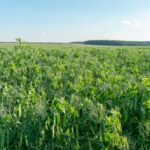Greenhouse farming offers South African farmers the opportunity to grow crops year-round, protect plants from harsh weather, and improve yields. However, the success of greenhouse farming depends on avoiding common mistakes that can lead to wasted resources, poor crop performance, and financial losses. Here are 10 mistakes to watch out for and how to avoid them.
1. Poor Greenhouse Site Selection
Choosing the wrong location for your greenhouse can severely affect crop growth. A greenhouse should be placed in an area with good sunlight exposure, proper drainage, and protection from strong winds. South African farmers often neglect to consider the orientation of the greenhouse. Position your greenhouse east to west to maximize sunlight exposure throughout the day.
2. Using Low-Quality Materials
Investing in cheap greenhouse materials might save costs initially but can result in frequent repairs or replacements. Inferior coverings may not provide adequate insulation or UV protection, while weak structures may collapse under strong winds or hail. Use durable materials that are suited for South Africa’s variable climate.
3. Neglecting Temperature Control
Failing to monitor and control temperature inside the greenhouse can stress plants. High temperatures during South Africa’s summer months can lead to wilting, while cold temperatures in winter can slow growth. Install thermostats, shading systems, and proper ventilation to maintain optimal temperature levels for your crops.
4. Overlooking Pest and Disease Management
A common misconception is that greenhouses eliminate the risk of pests and diseases. Poor hygiene and lack of monitoring can create conditions for infestations to thrive. Implement strict sanitation protocols, use pest-resistant nets, and regularly inspect plants for early signs of disease.
5. Incorrect Watering Practices
Overwatering or underwatering crops can harm plant health. Drip irrigation systems are ideal for greenhouses, as they provide precise amounts of water directly to the roots. Monitor soil moisture levels and adjust your irrigation schedule to prevent water stress or root rot.
6. Poor Ventilation
Lack of proper ventilation can lead to high humidity, which promotes fungal growth and reduces plant health. Ensure your greenhouse has adequate vents to allow for proper air circulation. Consider installing automated systems that adjust ventilation based on humidity levels.
7. Ignoring Soil Health
Reusing the same soil without replenishing nutrients can lead to poor crop performance. Regularly test the soil for pH, nutrient levels, and salinity. Amend the soil with organic compost or fertilizers to maintain its fertility and structure.
8. Planting Incompatible Crops Together
Planting crops with different water, light, or temperature requirements in the same greenhouse can result in suboptimal growth. For example, pairing heat-tolerant peppers with cool-loving lettuce may lead to one crop thriving while the other struggles. Group crops with similar needs to ensure uniform growth.
9. Overcrowding the Greenhouse
Trying to maximize yields by planting too many crops in a limited space can restrict airflow and sunlight penetration. Overcrowded plants are more susceptible to diseases and pest infestations. Maintain proper spacing based on the requirements of each crop to ensure healthy growth.
10. Lack of Knowledge and Training
Some farmers dive into greenhouse farming without understanding the technicalities involved. This can lead to inefficient use of resources and poor yields. Attend training sessions, workshops, and agricultural expos in South Africa to stay updated on the latest greenhouse farming practices and technologies.
Greenhouse farming has immense potential to boost agricultural productivity in South Africa, but it requires careful planning and management. By avoiding these common mistakes and implementing best practices, farmers can improve their yields, reduce losses, and make the most of their investment in greenhouse farming.
Join 'Farmers Mag' WhatsApp Channel
Get the latest Farming news and tips delivered straight to your WhatsApp
CLICK HERE TO JOIN






